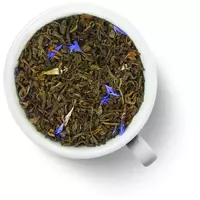Blue tea

When referring to the phrase "blue tea, " the vast majority of residents of our latitudes will imagine a blue tea drink in color. However, blue tea differs not only in its color, this drink is famous for its unique taste and subtle aroma. In addition, residents of Asian states use blue tea as a healing agent in the treatment of many ailments and diseases. It is worth taking a closer look at blue tea, especially since it is not just a tasty and refined drink, as well as a source of a large number of useful biologically active natural compounds.
China is considered the world leader in growing and harvesting tea. According to the classification adopted in the Celestial Empire, all teas have their own special purpose, variety and species. For example, elite varieties of Chinese tea are consumed only on important occasions. In China, it is simply not customary to use noble varieties of tea drink for daily tea parties. This is considered not just a bad tone, but a sign of real disrespect for ancient culture and traditions. Unfortunately, in our latitudes, few people really understand tea varieties, so often in domestic grocery stores under the guise of one tea drink they sell a completely different one.
In our area, two main types of tea are considered the most popular - black and green. However, between black and green tea, according to an ancient classification, there are still a number of independent varieties of tea drink. We think it will be interesting and not useless for all tea lovers to learn about new types of their favorite drink. Blue tea refers to the ulun or oolong tea variety - this is a medium fermented tea variety that is produced only in a few places throughout the planet Earth.
Blue tea is collected in China and on the island of Taiwan, with the Taiwanese oolong considered a more valuable and elite tea variety than its Chinese counterpart. It's all about the climate. It is noteworthy that blue tea is considered the oldest tea drink that began to be brewed and served to the ancient dynasties of Chinese emperors. Until now, blue tea belongs to the elite varieties of drinks. However, in Asia, blue tea is more affordable and not so expensive.
Blue tea has not only exceptional taste and aroma abilities. This drink is distinguished by its unique consumer characteristics and vitamin-mineral composition of the product. For example, blue tea sheets are strongly twisted and have the shape of tourniquets. This shape of the tea leaf helps the drink to withstand up to 15 brews. This means that just one teaspoon of blue tea can be used repeatedly.
Moreover, the taste, aromatic, as well as consumer characteristics of blue tea will remain unchanged even 15 times the brewing of the product. Blue tea also differs in that up to four harvests of tea leaves can be harvested in one season. After the harvest of blue tea is harvested, sheets of tea tree about go a long process of natural fermentation. The leaves of the plant are laid out in the sun and left for up to 10 hours in the open sky.
As a result, tea sheets twist and acquire their distinctive shape. The interesting thing is that at the edges the tea leaf becomes dried, and in the middle fresh. Currently, there are about a hundred diverse varieties of oolong tea. Among the most famous and popular are the following - Ding Fai Mei Ren, Da Hong Pao, Feng Huang Dan Cong, as well as Formosa Ulun.
blue tea 35 kCal
The energy value of blue tea (Ratio of proteins, fats, carbohydrates - ju):
Proteins: 0 g (~ 0 kCal)
Fats: 0 g (~ 0 kCal)
Carbohydrates: 8.81 g (~ 35 kCal)
Energy ratio (bj | y): 0% | 0% | 101%
 Español
Español Français
Français Português
Português Русский
Русский 简体中文
简体中文 繁體中文
繁體中文 日本語
日本語 한국어
한국어 العربية
العربية Türkçe
Türkçe Қазақ
Қазақ Deutsch
Deutsch Italiano
Italiano Українська
Українська
